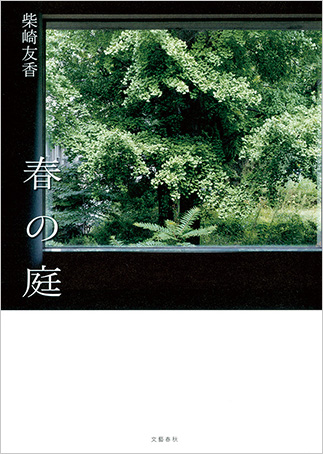
LIVES IN TOKYO AND THE REGIONS
Haru no niwa
[tarns. Spring Garden]
Bungeishunjū (Bunshun Bunko), 2017. 256 pp. ¥640. ISBN 978-4-16-790827-0.
Also published in: Chinese (traditional characters),English, French, German, Russian, and Spanish; rights sold for Korean
Following his divorce, Tarō moves into the View Palace Saeki III, a decrepit two- story apartment building scheduled for demolition. The eight units are cramped, and most of the residents live alone. One day Tarō notices Nishi, a tenant on the apartment’s second floor, gazing wistfully at the light-blue house next door.
Nishi is an unsuccessful manga artist who became fascinated by the light-blue house and the life of the family living there after discovering it in a collection of photographs titled Haru no niwa when she was a high-school student. Unable to forget the house after moving out to live on her own, she tracked it down and moved in next door.
The story is nested in structure. Nishi delves into the lives of the couple who built and lived in the house before leaving it behind, and she becomes friends with the new owner so that she can see inside. Tarō watches this carefully. Finally, another layer is added when Tarō’s sister is seen observing the other two characters. The light-blue house and the apartment building are the story’s real protagonists, with space itself playing the central role, transected by the characters who appear in the story. With precise descriptions and a finely calibrated sense of space, the author makes a bold experiment a resounding success.
The human characters are not just supporting roles, though. Tarō, Nishi, and the couple who built the light-blue house all have experienced the breakup of their households. Love, family, and everyday life are as fragile as glass: that is the message, conveyed with great emotional power, through this story of a house. It is a fairy tale for adults about the memory of past injuries and journeys of healing. (CK)
Nishi is an unsuccessful manga artist who became fascinated by the light-blue house and the life of the family living there after discovering it in a collection of photographs titled Haru no niwa when she was a high-school student. Unable to forget the house after moving out to live on her own, she tracked it down and moved in next door.
The story is nested in structure. Nishi delves into the lives of the couple who built and lived in the house before leaving it behind, and she becomes friends with the new owner so that she can see inside. Tarō watches this carefully. Finally, another layer is added when Tarō’s sister is seen observing the other two characters. The light-blue house and the apartment building are the story’s real protagonists, with space itself playing the central role, transected by the characters who appear in the story. With precise descriptions and a finely calibrated sense of space, the author makes a bold experiment a resounding success.
The human characters are not just supporting roles, though. Tarō, Nishi, and the couple who built the light-blue house all have experienced the breakup of their households. Love, family, and everyday life are as fragile as glass: that is the message, conveyed with great emotional power, through this story of a house. It is a fairy tale for adults about the memory of past injuries and journeys of healing. (CK)

Translation rights inquiries
Bungeishunjū Ltd.
(attn. Rights Management Dept.)
3-23 Kioi-chō, Chiyoda-ku, Tokyo 102-8008
Tel.: +81-3-3265-1211
Email: foreignrights@bunshun.co.jp
(When sending an e-mail, please enter a half-width character "@" instead of a full-width character "@.")

